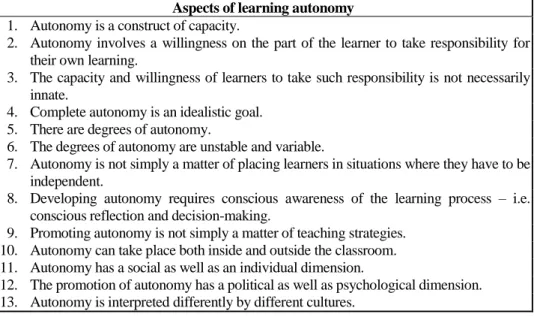AUTONOMY AND MOTIVATION: A SELF-DETERMINATION THEORY PERSPECTIVE ON ESP MOTIVATION
Full text
Figure


Related documents
New Directions for Evaluation Volume 2005, Issue 107 , Special Issue: Social Network Analysis in Program Evaluation Issue Edited by Maryann M. “The Nuts and Bolts of Social
a) Discretionary growth OK b) Indexed growth (MI, VA) c) Minimum growth rate (WA) d) Premium constraints. Final Expense
(waiting at MAX 60 seconds) after which it automatically reactivates the manual control 5b - Wireless Off button switch = press and hold 2 seconds, LED 4 turns off automatically
• Required participants for a course is 10–12 people, as an ideal for group work and creating a comfortable environment for learning and discussion (particularly with regard
A federal court in the Northern District of Illinois ruled that a signed terms sheet between a settling franchisor and franchisee was an enforceable agreement under Illinois
Using as primary outcome the major complication rate (hernia recurrence, prosthetic infection or reoperation associated with previous hernia surgery) within 3
This is the very reason why the advanced and cutting-edge research, education and data service are possible here in the Data Analysis Center for Geomagnetism and Space
Table 1 Meta-analyses in 30,000 samples identify seven novel loci for PR interval, QRS duration, and QT interval SNP info GoNL-imputed data Previous HapMap-based